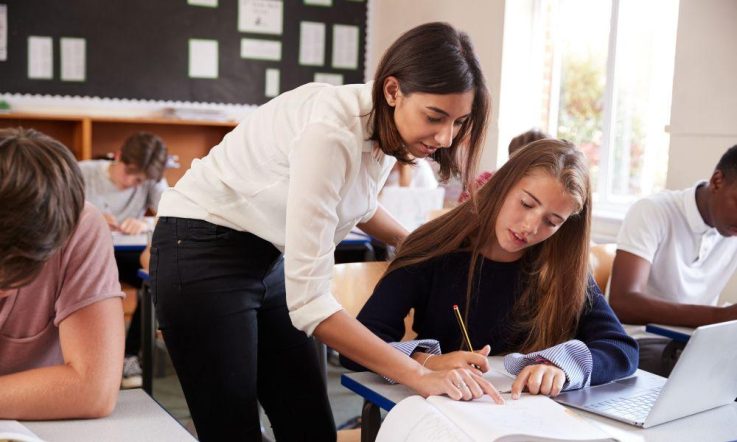In their book, Master Mathematics Teachers - Educational and Professional Excellence in Chinese Primary Schools authors Zhenzhen Miao, Christian Bokhove and David Reynolds aim to capture best mathematics teaching practices across 5 Chinese provinces: Anhui, Beijing, Jiangsu, Jiangxi and Tianjin.
The book is a practical guide and explores the mechanisms behind masterly teaching. In this extract for Teacher readers, the authors share how 3 teachers are using modelling to clearly define the goals and standards for students’ independent and group work.
Model the way for a shared discourse
Master teachers all clarify groupwork criteria or steps before students delve into the groupwork that might otherwise be less productive without clear goals and steps. It is with goals and standards clearly defined before independent/group work that fruitful outcomes can arise in the work of students and conceptual understanding can be built subsequently. Clear goals and standards are observable in all classrooms. In many cases, necessary thinking ‘tools’ are offered so that students can use these to express their thinking without having to invent one themselves.
The topic in Ms S’s class is to solve real-world problems that can be modelled with geometric progression where the common ratio is 2. The lesson starts with the word problem shown on the screen about a teacher trying to get in touch and inform 15 choir members of an urgent show to take place.
Before the class tap into the problem on their own, there is intensive class-wide brainstorming facilitated by the teacher on the key information and expectation of the problem and on the key strategies for solving it. After that, the teacher gives the class a final speedy formulation about the way in which they could represent their methods before they work independently on the task. She suggests the class use rectangles to represent the teacher in the problem and circles to represent the choir members, and label each line segment that connects a caller with a recipient with a number to represent the corresponding minute into the phone call.
Having thoroughly analysed the problem within the entire class, students are now equipped with clear representing tools, ready for attempting the problem on their own. Such representing methods work as a unified language for the class to describe solutions for the same problem.
It channels students’ thinking towards the mathematical patterns behind the problem and its solution. Without it, more time might be lost with everybody struggling to anchor their thinking on a clear representation that must, initially, be sensible to themselves and, later, to their peers in the class.
Similarly, in Ms T’s lesson on revision of areas of 2D shapes, before group work on revision notes, the teacher asks the class to structure their discussion with peers and cover three aspects: (1) the name of the shape they have drawn; (2) its area formula; (3) how the formula is deducted.
In many of the classrooms, there are shared conventions for student-to-student interactions at the class level, in addition to the widely existing peer interactions during groupwork. Students seem to have gotten used to inviting peers to answer their questions or comment on their solutions during whole-class time, without having the teacher step in or wasting any lesson time on transitioning. These conventions have been long established and are now part of the class culture.
In Mr B’s lesson on problem solving, different students are invited to share with the class their solutions to two subtasks on finding best strategies for buying sportswear from a shop according to the specific requirements of the tasks. The second student, John, has written at the beginning of his solution a short paragraph in analysing the key information given in the task.
This is applauded by the class, where applauding seems to be a class convention whenever they find their peers have done something great. After the applause, the teacher asks the class, ‘What did you find in John’s work?’ This question leads to some of the students pointing out that John has given the task a clear analysis before solving it. The discourse convention we observed appears to be quite detailed, long-established and well carried out in the class.
Master Mathematics Teachers - Educational and Professional Excellence in Chinese Primary Schools by Zhenzhen Miao, Christian Bokhove and David Reynolds, published by Routledge, is available for free via the link.
Master teachers all clarify groupwork criteria or steps before students delve into the groupwork. Think about how you approach groupwork in your classroom. Do you ensure students are across the criteria? What other thinking ‘tools’ do you offer students who assist them in expressing their thinking?
In one classroom, the authors observed that applauding seems to be a class convention whenever they find their peers have done something great. How do you acknowledge student achievement in your classroom? Are there opportunities to involve students in this process?



